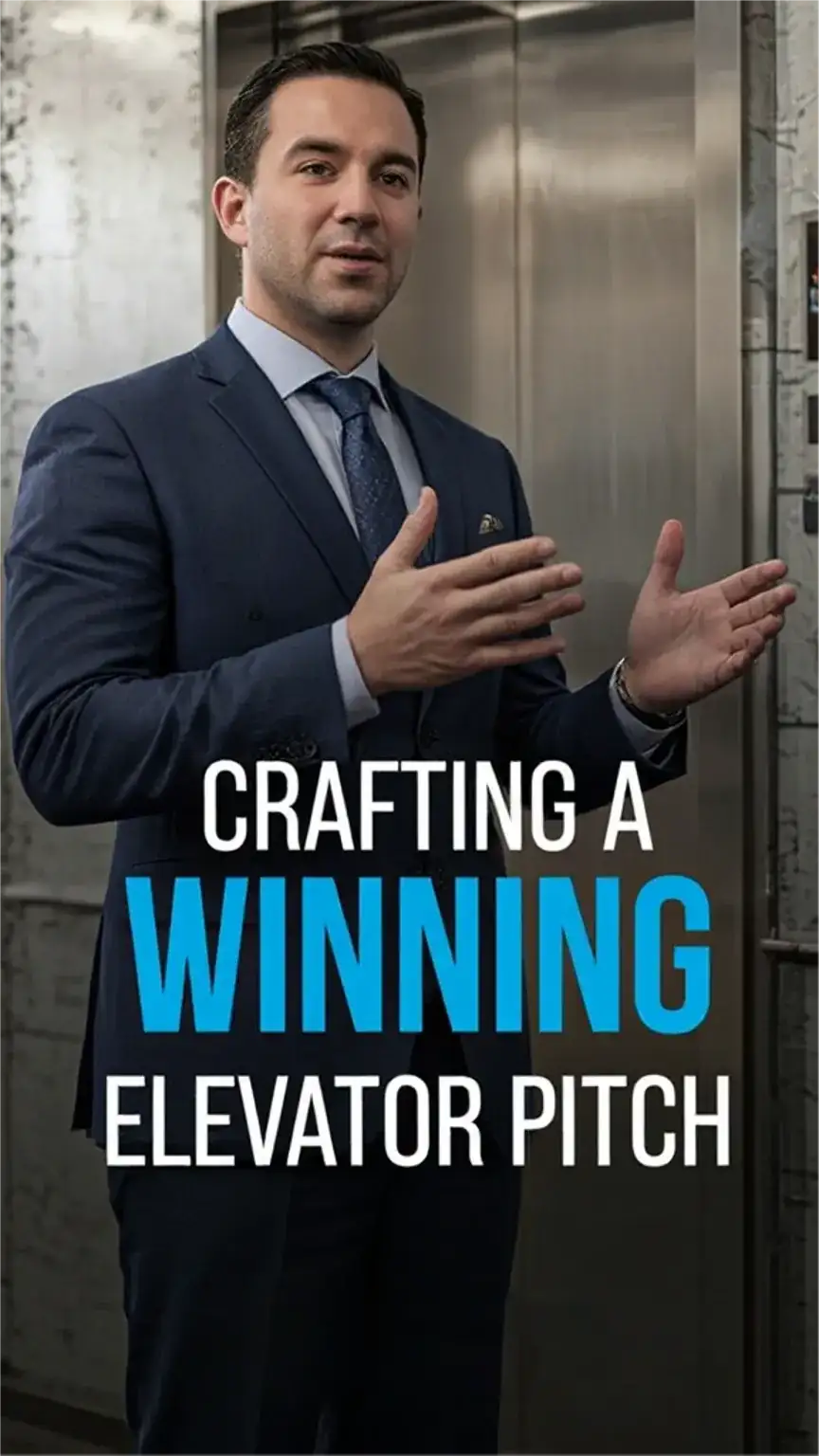As a guy who’s been there, I know how daunting it can be to navigate the world of professional networking. But trust me, it’s an essential skill for anyone looking to advance their career or simply build meaningful connections. It’s more than just collecting business cards; it’s about forging genuine relationships that can open doors you never knew existed. For the ladies reading this, think of it as giving your man the tools to build his professional village – a valuable asset for any partnership!
Imagine walking into a room where your confidence precedes you, not because you’re the loudest, but because you possess the quiet assurance that comes from knowing how to connect. Your future self will thank you for investing time in these networking hacks. It’s about shifting from feeling obligated to attend events to actively seeking out opportunities to learn and contribute. Let’s transform networking from a chore into a strategic advantage.

Mastering the Art of Building Meaningful Connections
Let’s be honest, the term “networking” can sometimes conjure images of awkward cocktail parties and forced small talk. But at its core, networking is simply the practice of building relationships with people who can help you and whom you can help in return. It’s about creating a mutually beneficial ecosystem where knowledge, opportunities, and support flow freely. Think of it as cultivating your professional garden; the more you tend to it, the more fruitful it becomes.
For those of you who shy away from these interactions, take it from Dave, a 45-year-old accountant who landed his dream client after revamping his LinkedIn profile photo and attending one industry mixer. He used to dread these events, but by shifting his mindset, he found them to be surprisingly rewarding. Similarly, Sarah, a graphic designer, found her most valuable collaborators through online forums, demonstrating that networking isn’t confined to in-person events.
Beyond the Handshake: Why Networking Truly Matters
It’s a crucial element for career advancement, personal growth, and even finding unexpected mentors. Moreover, for women seeking to understand the men in their lives, a strong network often translates to greater career stability and opportunity, which benefits the entire family. So, while it might feel like a solo endeavor, it’s often a shared success story.
Step 1: Identify Your Goals – Your Networking Compass
Before you start attending conferences or joining online groups, take some time to reflect on what you want to achieve through networking. Are you looking for a new job? Trying to expand your professional circle? Or perhaps you’re seeking mentorship or partnership opportunities? Having a clear understanding of your goals will help you focus your efforts and make the most of your networking time. It’s like setting a destination before embarking on a journey.

For instance, if you’re aiming for a leadership role, your networking strategy might involve seeking out established professionals in your field for informational interviews. Conversely, if you’re a startup founder, you might prioritize connecting with potential investors or strategic partners. Similarly, if you’re exploring a career change, identifying people in your desired industry is paramount.
This clarity ensures you’re not just collecting contacts, but actively building a network that aligns with your aspirations. Without a clear objective, networking can feel aimless, like wandering through a crowded room without a purpose. Remember, a well-defined goal is the first step towards achieving it.
Step 2: Prepare Your Elevator Pitch – Your Professional Soundbite
Your elevator pitch is the summary of who you are, what you do, and what you’re looking for. It should be concise, confident, and memorable. Practice your pitch until it feels natural, and make sure to include a unique selling point that sets you apart from others in your industry. Think of it as your professional calling card, delivered verbally.
A strong pitch typically lasts no longer than 30 seconds. It should answer the fundamental question: “What do you do?” but also hint at your value proposition. For example, instead of just saying “I’m a software engineer,” you could say, “I’m a software engineer who helps e-commerce businesses reduce cart abandonment by streamlining their checkout process.”
Furthermore, tailor your pitch to your audience. If you’re at a tech conference, emphasize your technical skills. If you’re at a business networking event, highlight the business impact of your work. Ladies, this is a great tip to share with your partner if he struggles with explaining his job! It’s about making a strong first impression quickly and effectively.
Pro Tip: Keep a few variations of your pitch handy for different situations.
Step 3: Attend Relevant Events – Strategic Mingling
Whether it’s a conference, meetup, or online forum, attending events is a great way to meet like-minded individuals and learn from industry experts. Make sure to research the event beforehand and come prepared with questions and a positive attitude. Your presence should be intentional, not accidental.
Before an event, review the attendee list if available, and identify key people you’d like to connect with. This allows you to approach conversations with a specific purpose. For example, if you admire someone’s work, plan to mention a recent project or article they published. This shows genuine interest and provides a natural conversation starter.
Similarly, identify sessions or workshops that align with your goals. Engaging in discussions during these segments offers opportunities to showcase your knowledge and connect with speakers or fellow attendees who share your interests. It’s about being a participant, not just an observer.
Step 4: Engage with Others – The Art of Active Listening
Networking is a two-way street, so be sure to listen more than you talk. Ask thoughtful questions, show genuine interest in others, and look for ways to help them achieve their goals. Remember, building relationships is key to successful networking. People are more likely to remember you if you remember them.
When engaging in conversation, focus on open-ended questions that encourage detailed responses. Instead of “Do you like your job?”, try “What do you find most rewarding about your current role?” This invites a more insightful exchange. Furthermore, actively listen to their responses, nodding and providing verbal cues to show you’re engaged.
Look for opportunities to offer value. Perhaps you know someone who could help them, or you have a piece of information that might be useful. Offering assistance without expecting anything in return builds trust and goodwill, which are foundational to strong relationships. Remember, it’s not just about what they can do for you, but what you can do for them.
Step 5: Follow Up – Nurturing the Connection
After meeting someone new, make sure to follow up and stay in touch. Send a personalized email or LinkedIn request, and look for opportunities to collaborate or support each other in the future. This is perhaps the most crucial, yet often overlooked, step. A great initial connection can fade without proper follow-up.
Your follow-up message should be timely, ideally within 24-48 hours of meeting. Reference a specific point from your conversation to jog their memory. For example, “It was great discussing the latest trends in AI with you at the Tech Innovators Summit. I particularly enjoyed your insights on machine learning applications.”
Furthermore, consider what value you can offer in your follow-up. Maybe you found an article related to your discussion or know of an event they might find interesting. This demonstrates continued engagement and strengthens the budding professional relationship. Consequently, consistent and thoughtful follow-up transforms acquaintances into valuable connections.

Elevating Your Networking Game: Advanced Strategies
Leverage Social Media Strategically
In today’s digital age, your online presence is as important as your in-person interactions. Platforms like LinkedIn are invaluable tools for professional networking. Ensure your profile is complete, professional, and highlights your skills and experience. Regularly share relevant content and engage with posts from your connections.
Think of your LinkedIn profile as your digital handshake and resume combined. It’s often the first place people will look to learn more about you. Consequently, keeping it updated and active signals your engagement within your industry. Consider sharing industry news, insights, or even behind-the-scenes glimpses of your work.
Furthermore, actively participate in relevant LinkedIn groups. These online communities are excellent for asking questions, sharing expertise, and connecting with peers who share similar professional interests. It’s a fantastic way to expand your reach beyond your immediate network. Ladies, this is a great way to encourage your partner to stay visible and connected, even when he’s not actively attending events.
The Power of Informational Interviews
Informational interviews are a fantastic, low-pressure way to gather insights and build connections with professionals in fields or roles that interest you. The goal isn’t to ask for a job, but to learn about their career path, industry trends, and advice they might have for someone looking to enter or advance in their field.
When requesting an informational interview, be respectful of their time. Clearly state your purpose and suggest a brief meeting, either in person or virtually. For example, you might say, “I’m exploring opportunities in marketing analytics and greatly admire your work at [Company Name]. Would you be open to a brief 20-minute chat sometime next week so I can learn more about your experience?”
During the interview, come prepared with specific questions. Ask about their day-to-day responsibilities, the challenges they face, and what they enjoy most about their work. Similarly, inquire about the skills and qualifications that are most valuable in their industry. Your future self will thank you for gathering this valuable intelligence.
Cultivate a “Giver’s Mentality”
True networking success often comes from a “giver’s mentality.” Instead of constantly thinking about what you can get, focus on what you can give. Look for opportunities to help others, whether it’s by making an introduction, sharing a useful resource, or offering support. This generosity fosters goodwill and builds stronger, more authentic relationships.
When you consistently offer value to your network without expecting immediate returns, you build a reputation as someone reliable and helpful. This, in turn, makes people more likely to want to help you when you need it. It’s a long-term investment in your professional capital.
For example, if a connection mentions they’re looking for a specific type of software, and you know of a great option, pass along the recommendation. Or, if you see an article that directly relates to a colleague’s project, share it with them. This proactive approach to helping others is a powerful networking tool.

Don’t Underestimate Internal Networking
Networking isn’t just about external connections; it’s also crucial to build strong relationships within your own organization. Getting to know colleagues in different departments can provide valuable insights into how the company operates and open doors for cross-functional collaboration or internal opportunities.
Make an effort to connect with people outside your immediate team. Attend company social events, join employee resource groups, or simply strike up conversations in the breakroom. Understanding different perspectives within your company can help you become a more effective employee and a more valuable asset.
Furthermore, seek out mentors within your organization. A mentor can offer guidance, share their experiences, and advocate for your career growth. Building these internal relationships is just as vital as cultivating your external network.
Be Memorable: Go Beyond the Ordinary
In a sea of professional interactions, being memorable is key. This doesn’t mean being loud or ostentatious, but rather distinctive and authentic. What makes you stand out? It could be your unique perspective, your passion for a particular topic, or even a shared hobby.
Consider what makes you unique. Perhaps you have an unusual background, a quirky sense of humor, or a deep knowledge of a niche subject. Don’t be afraid to let these aspects of your personality shine through. Authenticity is magnetic.
Pro Tip: Attention to detail in your personal style can make you more memorable. Similarly, a well-crafted, insightful question can leave a lasting impression.
Bonus Tip: Be Authentic – Your True North
Lastly, don’t try to be someone you’re not. Authenticity is key to building meaningful connections. Be yourself, and let your unique personality shine through. It’s okay to be a little quirky or imperfect – it’s what makes you memorable! People connect with genuine individuals, not manufactured personas.
Your personality, your values, and your genuine interests are your greatest assets in networking. Trying to project an image that isn’t true to yourself is exhausting and ultimately unsustainable. When you’re authentic, your interactions feel natural, and the connections you make are more likely to be genuine and lasting.
Ladies, this is especially important for your partner. Encourage him to be himself. His quirks are likely what you love about him, and they’re what will make him memorable to others too. Embrace your individuality; it’s your superpower.

The Long Game: Cultivating Lasting Professional Relationships
Networking isn’t a one-time event; it’s an ongoing process of nurturing relationships. Think of it like tending to a garden. You plant seeds (make connections), water them (follow up and stay in touch), and provide nourishment (offer value and support). Over time, these efforts yield a rich harvest of opportunities and collaborations.
Consistent, thoughtful engagement is more impactful than sporadic bursts of activity. Regularly check in with your key contacts, share relevant articles, or simply send a message to see how they’re doing. These small gestures maintain the strength of your connections and keep you top-of-mind.
Furthermore, be prepared to go the extra mile for your network. When opportunities arise to help someone you know, do so enthusiastically. This commitment to supporting others is what truly differentiates a superficial network from a powerful professional community. Your future self will definitely thank you for building this robust support system.
Conclusion: Your Network is Your Net Worth
Networking is an art that requires skill, patience, and practice. But with these tips, you’ll be well on your way to building a strong professional network and making meaningful connections. Remember to stay focused, be genuine, and always be open to learning and growth. It’s a journey, not a destination, and the rewards are immense.
By mastering the art of professional networking, you’re not just advancing your career; you’re enriching your life with diverse perspectives and valuable relationships. So, step out of your comfort zone, engage authentically, and watch your professional world expand in ways you never imagined. Tag a friend who needs a style intervention – or a networking boost!
Ready to own your image and build your professional influence? Start by refining your elevator pitch and actively seeking out one new networking opportunity this week. Share your #StyleUpgrade and networking wins on Pinterest or your favorite socials!






